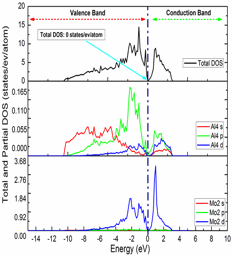57th Annual Report on Research 2012 Under Sponsorship of the ACS Petroleum Research Fund
Reports: DNI1050283-DNI10: Atomistic Simulations of the Chemistry of Environmentally Assisted Cracking in Nickel-Chromium Alloys
Srinivasan Srivilliputhur, PhD, University of North Texas
SUMMARY: This work combines quantum mechanical and finite element simulations to understand fundamental mechanisms of embrittlement and corrosion. These simulations are coupled with appropriate validation experiments to mitigate corrosion using laser surface alloying. Lastly, we have developed predictive models to optimize processing parameters and composition for corrosion tolerant coatings. Two PhD students currently work on this project. The project is on track. We have submitted three papers for publication in peer-reviewed journals and anticipate submitting at least three more papers in 2013. PhD student Ravishanker Rajamure will be presenting his research at the Annual Meeting of the Metals Minerals and Materials Society on March 5, 2013. We have also been invited to give a talk at the International Symposium on the Environmental Damage in Structural Materials Under Static/Cyclic Loads at Ambient Temperatures to be held at Bergamo, Italy (August 2013). PhD student Ms. Priyanvada Paranjape suffered serious pregnancy related health issues in early 2012 and her work slowed down (especially writing her first research manuscript). She is slowly getting back to her routine in 2013 and back in her PhD program continuing her first principles study on hydrogen embrittlement. Below, we summarize our investigations of the role covalent bonding plays in increasing the corrosion resistance of Al-Mo and Al-Ta intermetallics. These were model systems chosen for their amenability to laser surface alloying, finite element analysis, and density functional theory calculations.
Introduction:
Environmentally assisted cracking2 (EAC) is a general term that includes stress corrosion cracking (SCC) and hydrogen embrittlement (HE). EAC is a phenomenon by which a normally ductile metal looses its toughness when it is subjected to mechanical stresses in presence of a corroding environment. Localized cracks rapidly form and catastrophically propagate due to synergy between a susceptible material, tensile stresses, and material's environment. Certain events like surface diffusion, surface reactions, absorption into bulk, bulk diffusion to the plastic zone ahead of the advancing crack, chemical reactions in the bulk, and the rate of interatomic bond rupture should occur for sustained crack propagation. We have made significant strides in coupling laser surface alloying, corrosion experiments, finite element analysis, and density functional theory calculations to develop protocols to mitigate detrimental effects of corrosion.
Results and Discussions:
Laser surface alloying of Molybdenum, Tantalum on Al 1100 were performed at varying energy densites to improve the corrosion resistance. The microstructre of alloyed surface was analyzed using scanning electron microscopy and X-ray diffraction. Ab inito calculations were used to study the heat of formation, elastic and electronic properties of Al-Mo alloy system. Anodic polarization test in 0.01 M HCl solution at pH 2 was performed to evaluate the corrosion resistance of Al-Mo, Al-Ta intermetallics. The results obtained from first principle calculations clearly corroborate that the increase in corrosion resistance is mainly due to the formation of covalent bonding via hybridization of Al (S, P) and Mo (d) orbitals.
Future Work: The findings of the present study have clearly indicated the feasibility of designing the novel materials using Al-Mo, Al-Ta system to mitigate corrosion mitigation, resist wear, and withstand high temperatures. We will use the coupled laser surface alloying, finite element analysis, and DFT approach developed in this study to Ni-Cr-H system for the reminder of Priyanvada Paranjape's PhD dissertation research.
Submitted Manuscripts:
1. Ravishanker Rajamure et al, " Laser Surface Alloying of Molybdenum on Aluminum for Corrosion Protection", Metallurgical and Materials Transactions (Under Review, 2012)
2. Hitesh Vohra et al, "Dilution of Molybdenum during Laser Surface Alloying", Journal of Alloys and Compounds (Under Review, 2012)
3. Hitesh Vohra et al, "Design and optimization of microstructure for improved corrosion resistance in laser surface alloyed aluminum with molybdenum", International Journal of Precision Engineering and Manufacturing (Under Review, 2012)
(d) AlMo3
Figure 1. Density of states for various Al-Mo intermetallic compounds:Al5Mo, Al8Mo3, AlMo, AlMo3 N(Ef): 2.8, 0.402, 3, 3 states/ev/atom. Comparison of DOS for various Al-Mo intermetallics indicate that Al8Mo3 is the most stable structure mainly due to the lowest value of (N (Ef)). The presence of fermi level in sharp narrow valley in the bonding region clearly elucidates that the system has highest structural stability when compared with other Al-Mo intermetallics.
Figure 2. Anodic Polarization before and after laser processing in 0.01 M HCl at pH 2 are compared here for Al-Mo system. Note that the increase in corrosion resistance after laser processing may be attributed to the displacement of cathodic loop towards lower current densities by one decade and reduction in the anodic current densities by approximately two decades. This further implies that increase in corrosion resistance is due to the reduction in the cathodic activity by presence of singular Al5Mo intermetallic phase.
Figure 3. Density of states for Al3Ta intermetallic compound (N(Ef): 0.26states/ev/atom)
Figure 4. Comparison of Anodic Polarization before and after laser processing in 0.01 M HCl at pH 2 in Al-Ta systems.

















